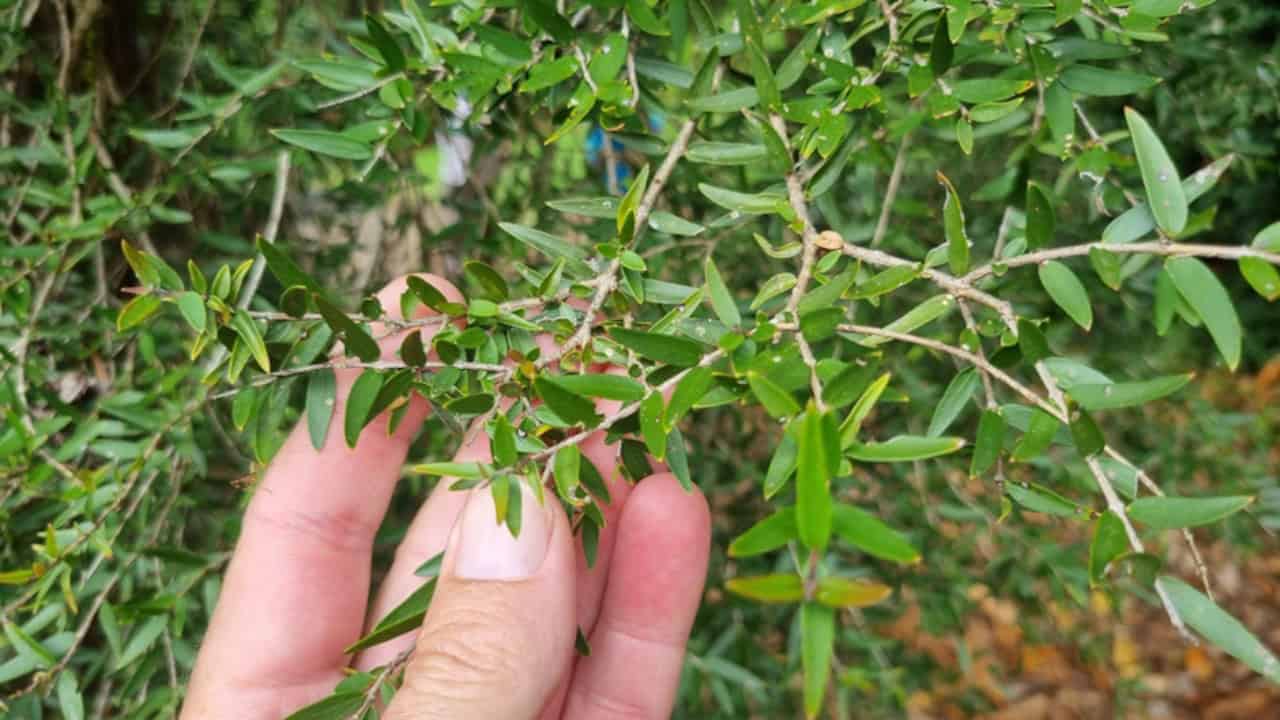Curry Leaf Myrtle
Backhousia angustifolia
Not Available in WA
Curry Leaf Myrtle is a dense, flowering shrub producing edible foliage that may be used as a culinary spice. Also known as “Narrow Leaf Myrtle”, this flowering myrtle can be found in monsoon forests and vine thickets, and along streams and scrubs in southeast Queensland and northeastern New South Wales.
Leaves are aromatic, boasting a warm fragrance akin to the leaves of a curry plant. Like many aromatic Australian natives, these leaves possess a complex profile that may include hints of honey, lavender or aniseed, depending on growing conditions. Crush or pound fresh leaves to release the scent, or dry batches of leaves and ground into a powdered spice. The fluffy white flowers produced in late spring are also edible and have a curry-like taste. These small flowers are excellent for attracting pollinators and birds.
This is a slow growing, but densely foliated plant, which should provide small quantities of ongoing leaves throughout the year or a generous harvest every few months. Choose firm leaves that don’t crack easily, and pluck them straight off the bush.
Curry Leaf Myrtle is an evergreen bushfood species that may be grown as a shrub or small tree. It suits full-sun, part-shade or full-shade positions, and prefers a rich or loamy well-drained soil. In more sandy areas, add soil improver and plenty of organic matter prior to planting, and keep the plant well mulched and watered throughout Summer.
Allowed to grow to full size, it can reach heights of up to 5m and a spread of 3m. With its dark grey bark, two-toned leaves and small, white Springtime flowers, Curry Leaf Myrtle is an excellent addition to Australiana gardens, courtyards, balcony gardens, veranda gardens, micro-food forests, and as an edible windbreak or screen.
Can a Curry Leaf Myrtle thrive in a small backyard?
It certainly can. As a slow-growing plant, you won’t be under too much pressure to keep your Curry Leaf Myrtle at a manageable size. This species is also suitable for balcony and container gardens. Just be sure to choose a large pot. Keep in mind that a container-grown tree may need to be repotted every few years to replenish the potting mix.
How should I fertilise my Curry Leaf Myrtle?
Use a slow-release fertiliser in the Spring.
Other species of myrtle can be used for essential oil. How can I get essential oil from a Curry Leaf Myrtle?
Leaves and twigs may be steam-distilled to extract the essential oil at home, using distilling apparatus. We should caution that while “curry leaf essential oil” is said to have some remedial and household applications, it comes from a completely different plant (Murraya koenigii). The leaf oils of Curry Leaf Myrtle (Backhousia angustifolia) contain different compounds and may not necessarily serve as an equivalent substitute.
What are the little specks all over my Curry Leaf Myrtle branches?
Your tree may be infested with scale, a type of insect that feeds on the sap of twigs, branches and leaves. You can easily remove these by hand or with a blast of water. Or apply horticultural oil, following the instructions on your spray bottle.

Suitable for full-sun

Suitable for part-shade

Suitable for full-shade

Suitable for pots

Dimensions:
Height 5m
Width 3m

Tolerates sandy soils

Fruits from:
Year 1 onwards

Bird attracting

Attracts bees & insects

Suitable for hedging/screening

Provides shade

